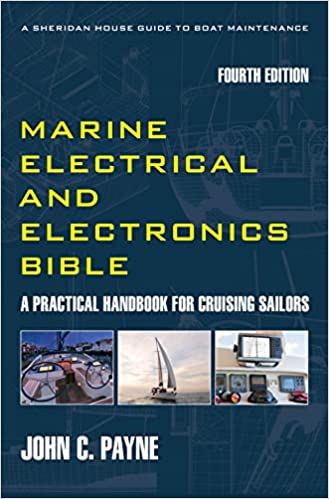Boat LED lighting
Boat LED lighting, these days it is a no brainer. Whether you are a rusted on fluorescent lighting fan or you prefer halogen or any other light types, the lighting area calculation is a very important factor. If you have a cavernous saloon area it is going to take a fair amount of light to illuminate it all, and that includes boat LED lights or halogen light bulbs. If you want it well lit so you can read the newspaper, then it may even take more lighting.
The area and the location of the various lights is just as important as planning it in a new home. Background illumination, a luxury on a cruising yacht, is generally low power illumination that is used to provide "mood" or ambience illumination, especially when you’re at the boat drinks stage of the evening. What can be called low level illumination is localized and is often used for chart tables, red night and courtesy illumination. Most applications of this type are spot type fittings with localized beams. The new generation boat LED light fittings work well in this application.
High level lighting comprise those fixtures that are required to provide good levels of illumination to safely perform tasks. These include galley, saloon, engine machinery space etc. In these applications good shadow and glare-free illumination is essential. The word safety is an important one to remember here.
The 4th Edition of the Marine Electrical Electronics Bible Get your copy and start becoming self sufficient and save money on expensive technician callouts. The 4th Edition of the Marine Electrical Electronics Bible Get your copy and start becoming self sufficient and save money on expensive technician callouts.Boat LED lighting - Cabin Surfaces and Light Efficiency
It is a simple fact that cabins with low reflective surfaces are going to require a greater number or more powerful output lights to illuminate that area. Painted surfaces, which are generally white and cream painted surfaces, have a high reflectivity, typically around 80%. This can have quite considerable cost ramifications.
The major reductions are that fewer fixtures are required, less cable and installation costs, lower power consumption for the required illumination levels. Timber surfaces, such as some of the most beautiful teak fit-outs require considerable numbers of lighting fittings, as the reflectivity of the teak is typically only around 20%.
Boat LED lighting
This factor is critical is that all important calculation on power consumption can be made. The saloon fixtures may stay on for extended periods, with consequentially higher current consumption, whereas the toilet fixtures may not stay on long but be subject to a far greater switching on and off cycle. Bunk illumination is generally fairly low use, as are machinery spaces, and the chart table. Long term operation fittings require lower energy solutions to save power. So the equation will comprise an analysis of ratings and times. It is a simple exercise but worthwhile.
Boat LED lighting
It is a regrettable fact that the ideal fixture in terms of illumination do not always match the aesthetic requirements. When you go to your local boat parts outlet the choice can be overwhelming. The challenge is therefore trying to come to a suitable compromise. Ideally a mixture of halogen light bulb or boat LED light fixtures will provide all of the necessary solutions but not everyone likes the very white light.
The most common boat light used to be the fluorescent lighting tube fitting but that has changed. The best of the range on a quality basis for fluorescent lighting fittings is undoubtedly Aqua Signal. They are not cheap, but the tradeoff is that they are well engineered quality fittings, they will last as long as the boat, unlike most other fittings they will probably go through a lot less tubes, and similarly they will not cause aggravating Radio Frequency Interference (RFI).
As a note all European fluorescent lighting fixtures are interference free due to stringent requirements. I have installed several brass finish fittings on my previous boat. I am more than pleased with the appearance and the lumen output of them, with a very low power consumption. So as a solution they meet all the criteria. Generally one fitting will suffice, and both the light diffusion and quality are excellent.
There is an impressive array of quality fixtures available at your boat parts outlet. These range from the beautiful Cabin brass fixtures from Denmark with a halogen light bulb, to the very nice range from Cantalupi of Italy. My classic yacht had several Cabin brass fittings, they are good however spot illumination is not the whole answer.
Boat LED lighting
My machinery spaces have a couple of nice halogen-light-bulb fittings, and many have changed over to boat LED fitting types so that I have maximum illumination around the engine when I need it, and they look the part as well. Incandescent-light fixtures have their place, but these days they are becoming somewhat redundant and I had installed two stainless surround semi-recessed Italian lighting fittings in the toilet and shower area of my previous boat. They look terrific, are well made, and what is more being incandescent they do not suffer as much from repeated switching on and off. My other incandescent lighting is an Aqua Signal red fixture in the galley area for night vision retention on passage making when that coffee is essential to survival through the small hours.
Boat LED Light Illumination Summary
Treat your boat LED lighting system with the same care as all other systems and safety related systems on board. Look carefully at your lighting systems, assess whether they do the job and select the right fitting for each job. Ensure that they are properly installed, by ensuring that the correct sized cables are run so that voltage drop problems are eliminated, so you get the maximum available output. About boat lighting and all boats need the right boat LED light fixtures.
